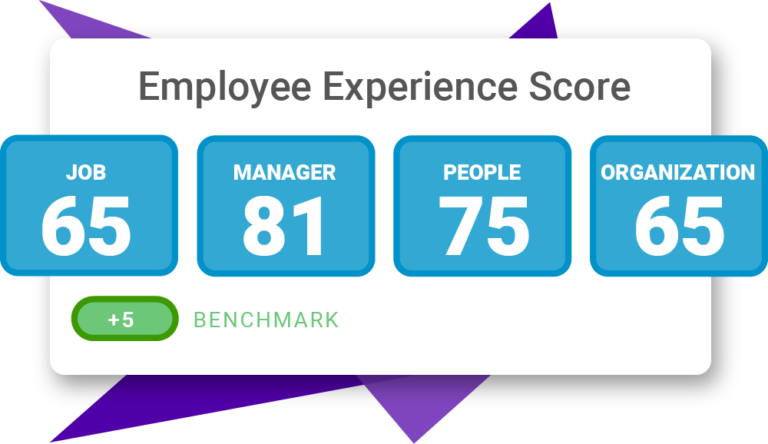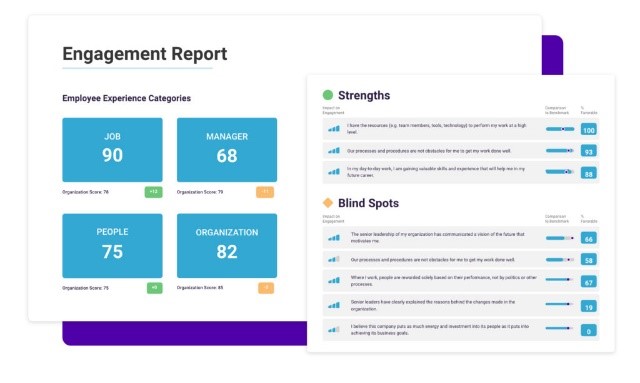Employee Retention Programs: Keeping Your Best Talent Happy
By PSC Admin |
11.4 min read
Employee retention is a cornerstone of business success. High turnover rates can be detrimental, leading to increased recruitment costs, loss of organizational knowledge, and decreased morale. At Predictive Success, we understand that retaining top talent is not only about competitive salaries but about creating an environment where employees feel valued, engaged, and motivated to contribute to the organization’s long-term goals. Our mission is to help businesses optimize their workforce through data-driven strategies and tools that enhance employee satisfaction and retention.
Understanding Employee Retention
Employee retention is the ability of an organization to keep its employees over time. It is crucial because high turnover can result in significant costs related to recruiting, onboarding, and training new employees, as well as the potential loss of productivity and institutional knowledge. According to recent studies, the average cost of losing an employee can range from 50% to 200% of the employee’s annual salary. Common reasons for turnover include lack of career growth opportunities, insufficient compensation, poor management, and lack of recognition.
Understanding these factors is the first step in developing effective retention strategies. Additionally, it’s important to consider the impact of turnover on team dynamics and morale. High turnover can disrupt workflows, increase stress among remaining employees, and create a negative atmosphere. On the other hand, a stable workforce can lead to stronger team cohesion, higher productivity, and a more positive work environment.
Furthermore, it’s essential to recognize the evolving expectations of the modern workforce. Today’s employees seek more than just a paycheck; they desire meaningful work, opportunities for growth, and a healthy work-life balance. By addressing these needs, organizations can foster a loyal and engaged workforce, reducing turnover and its associated costs.
The Predictive Index® and Employee Retention

The Predictive Index® (PI) system is a scientifically validated tool designed to understand and leverage workforce behavior. At Predictive Success, we use PI Behavioral Assessments™ and PI Cognitive Assessments™ to help organizations identify the behavioral drives and cognitive abilities of their employees. These insights enable businesses to make informed decisions about hiring, team building, and employee development.
The PI Behavioral Assessment™ measures four primary behavioral drives: dominance, extraversion, patience, and formality. Understanding these drives helps managers create roles and responsibilities that align with each employee’s natural tendencies. Moreover, the PI Cognitive Assessment™ provides insights into an individual’s cognitive ability, helping to ensure that employees are placed in roles that match their capacity for learning and problem-solving. This alignment not only enhances job performance but also increases job satisfaction, reducing the likelihood of turnover.
Predictive Success has successfully implemented the PI system across various industries, demonstrating its versatility and effectiveness. For instance, a healthcare organization used PI to reduce nurse turnover by identifying the key behavioral traits associated with high performance and satisfaction in nursing roles. By hiring and developing nurses who fit this profile, the organization improved retention rates and patient care quality.
Diagnosing Retention Challenges
Our Diagnose solution is designed to uncover the root causes of employee disengagement and turnover. By using diagnostic tools, businesses can identify specific areas of concern, such as lack of engagement, misalignment of roles, or ineffective management practices. The Diagnose solution provides actionable insights through employee surveys, engagement metrics, and performance data.
Employee surveys assess various aspects of the work environment, including job satisfaction, engagement levels, and perceptions of management. By analyzing survey results, organizations can pinpoint specific areas that require improvement. Engagement metrics provide additional insights into employee retention challenges. Metrics such as turnover rates, absenteeism, and productivity levels help organizations understand the impact of disengagement on overall performance.
Performance data is also crucial for diagnosing retention challenges. By analyzing performance trends, organizations can identify high-performing employees who may be at risk of leaving. Early identification allows for proactive measures, such as providing additional support, recognition, or development opportunities, to retain these valuable employees.
Building a Retention-Focused Culture

Creating a culture that prioritizes employee retention involves fostering a positive, inclusive, and supportive work environment. This starts with leadership demonstrating a commitment to employee well-being and professional growth. Strategies include promoting open communication, encouraging collaboration, and recognizing and valuing diverse perspectives.
Companies with strong retention-focused cultures often report higher levels of employee satisfaction, productivity, and loyalty. For example, companies that regularly celebrate achievements and encourage peer recognition create a sense of community and belonging, which are key to retaining employees. In addition to recognition programs, fostering a culture of continuous feedback is essential.
Investing in employee well-being is another critical aspect of a retention-focused culture. This includes offering comprehensive health and wellness programs, providing mental health support, and promoting work-life balance. Organizations that prioritize employee well-being demonstrate that they value their employees as individuals, not just as workers, which can significantly enhance retention.
Diversity and inclusion initiatives also play a crucial role in building a retention-focused culture. Creating a diverse and inclusive workplace where all employees feel valued and respected can improve job satisfaction and reduce turnover. This involves implementing policies and practices that promote diversity at all levels of the organization and actively working to eliminate bias and discrimination.
Employee Engagement Strategies

Employee engagement is critical for retention. Engaged employees are more likely to stay with an organization, perform at higher levels, and contribute positively to the workplace culture. Strategies to boost engagement include providing clear communication about organizational goals, offering opportunities for professional development, and creating a feedback-rich environment.
One effective strategy is to align individual goals with organizational objectives. When employees understand how their work contributes to the company’s success, they are more likely to feel a sense of purpose and commitment. Regularly communicating organizational goals and celebrating milestones can reinforce this alignment and boost engagement.
Creating opportunities for professional development is another key aspect of engagement. Offering training programs, workshops, and tuition reimbursement can help employees develop new skills and advance their careers. Mentorship programs also provide valuable support and guidance, fostering a sense of connection and belonging within the organization.
Recognition and rewards are also crucial for maintaining high levels of engagement. Recognizing employees for their achievements and contributions can boost morale and motivation. This can be done through formal recognition programs, such as employee of the month awards, as well as informal recognition, such as thank-you notes or shout-outs during team meetings.
Professional Development and Career Growth
Providing opportunities for professional development is a key factor in retaining employees. Employees who feel they can grow within the company are less likely to seek opportunities elsewhere. Programs that support continuous learning, such as workshops, training sessions, and online courses, are essential. Additionally, mentorship and coaching programs can provide personalized guidance and career advice, helping employees navigate their career paths within the organization.
Encouraging lateral moves within the organization can also promote career growth and retention. By allowing employees to explore different roles and departments, companies can help them develop a broader skill set and gain a deeper understanding of the business. This approach not only supports personal growth but also increases the overall versatility and resilience of the workforce.
Moreover, creating a culture of continuous learning is crucial. This involves promoting a growth mindset and encouraging employees to seek out new knowledge and experiences. Providing access to resources such as online learning platforms, industry conferences, and professional networks can support this culture. Regularly updating training programs to reflect industry trends and emerging skills ensures that employees remain competitive and engaged.
Inspiring and Motivating Employees

Our Inspire solution is designed to help organizations align employee roles with their strengths and motivations. By understanding what drives each employee, businesses can tailor their management approaches to inspire and motivate their workforce effectively. Techniques include setting clear, achievable goals, providing regular feedback, and recognizing individual contributions.
At Predictive Success, we advocate for a strengths-based approach to employee management. This involves identifying each employee’s unique strengths and leveraging them in their roles. Employees who use their strengths regularly are more engaged, productive, and satisfied with their work. Tools such as the Predictive Index® can help managers gain insights into their team members’ behavioral drives and preferences, enabling them to tailor their management styles accordingly.
Creating a positive and inspiring work environment also plays a vital role in motivation. This includes fostering a culture of trust, respect, and collaboration. Encouraging open communication and providing opportunities for employees to voice their ideas and concerns can create a more inclusive and supportive workplace.
Work-Life Balance and Flexibility
Work-life balance is increasingly important to employees and can significantly impact retention. Flexible work policies, such as remote work options and flexible hours, help employees manage their personal and professional responsibilities more effectively. Organizations that promote a healthy work-life balance often see higher levels of employee satisfaction and reduced burnout.
Flexible work arrangements can include telecommuting, flexible scheduling, compressed workweeks, and job sharing. These options allow employees to choose the working arrangements that best suit their needs, leading to higher job satisfaction and lower stress levels. Additionally, providing the necessary tools and resources for remote work, such as technology support and virtual collaboration platforms, can ensure that employees remain productive and connected regardless of their location.
Health and wellness programs are another effective way to support work-life balance. Offering on-site fitness facilities, mental health resources, and wellness workshops can help employees manage stress and maintain their physical and mental health. Additionally, providing access to employee assistance programs (EAPs) can offer support for personal issues that may affect work performance.
Recognizing and Rewarding Employees

Recognition and rewards play a crucial role in employee retention. Employees who feel appreciated are more likely to stay with an organization. Effective reward systems include both monetary and non-monetary recognition, such as bonuses, promotions, and public acknowledgment of achievements. Implementing regular recognition programs can boost morale and reinforce positive behaviors.
Monetary rewards, such as performance bonuses, salary increases, and profit-sharing plans, provide tangible recognition for employees’ hard work and achievements. These rewards can be tied to specific performance metrics, ensuring that employees are rewarded fairly and transparently.
Non-monetary recognition is equally important for maintaining high levels of motivation and job satisfaction. Public acknowledgment of achievements, whether through company newsletters, social media, or team meetings, can boost employees’ sense of pride and accomplishment. Personalized recognition, such as handwritten notes or personalized awards, shows employees that their contributions are valued and appreciated.
Measuring and Monitoring Retention Efforts
To ensure the effectiveness of retention strategies, it is essential to measure and monitor their impact continuously. Tools such as employee surveys, performance metrics, and retention rates provide valuable insights into the success of various initiatives. Regular feedback mechanisms, including one-on-one meetings and anonymous surveys, help identify areas for improvement and adjust strategies accordingly.
Key Metrics and Tools for Monitoring Retention Efforts
| Metric/Tool | Description | Importance |
| Employee Surveys | Assess job satisfaction, engagement, and management perceptions | Identify areas needing improvement |
| Performance Metrics | Track productivity, absenteeism, and engagement levels | Reveal patterns correlating with turnover |
| Retention Rates | Measure the percentage of employees staying over a period | Evaluate the effectiveness of retention strategies |
| One-on-One Meetings | Regular individual meetings between managers and employees | Provide opportunities for open communication and immediate feedback |
| Anonymous Surveys | Enable employees to share honest opinions without fear of repercussions | Uncover hidden issues affecting retention |
| Predictive Analytics | Use data to predict potential turnover risks | Allow for proactive interventions |
| 360-Degree Feedback | Collect feedback from peers, subordinates, and supervisors | Provide comprehensive insights into employee performance and satisfaction |
At Predictive Success, we recommend a data-driven approach to monitoring retention efforts, using metrics to inform decision-making and continuously enhance employee satisfaction. By regularly assessing and refining retention strategies, organizations can create a dynamic and supportive environment that retains top talent.
Conclusion: Employee Retention Programs
Employee retention is a multifaceted challenge that requires a strategic and data-driven approach. By understanding the factors that influence turnover and implementing targeted retention strategies, organizations can create a supportive and engaging work environment. At Predictive Success, we offer a range of tools and solutions designed to help businesses diagnose, inspire, and retain their top talent. From behavioral assessments to engagement programs, our solutions provide actionable insights that drive employee satisfaction and loyalty. By prioritizing retention, organizations can reduce costs, enhance productivity, and achieve long-term success.
Investing in employee retention is not just a matter of reducing turnover rates; it’s about fostering a workplace where employees feel valued, supported, and motivated to contribute their best efforts. By implementing the strategies outlined in this article, organizations can create a thriving work environment that attracts and retains top talent, ensuring sustained growth and success in an increasingly competitive market.
Discover how Predictive Success can help you retain your top talent and boost employee engagement by requesting a demo today.
Further Reading
For more insights on employee retention strategies, check out the following article:
- The top talent acquisition trends in 2024″ by McKinsey: This article highlights several key trends that are shaping the talent acquisition landscape in 2024. It emphasizes the importance of addressing employee burnout and engagement, noting that organizations are increasingly focusing on these areas to retain top talent. The piece also discusses the need for HR to professionalize further and adapt to new collaboration methods and talent structures. Another significant point is the continuing struggle with diversity and inclusion, with a specific focus on the broken rung in career progression for women and minorities. This article is insightful for understanding how organizations can create a more inclusive and engaging work environment (McKinsey & Company).
Related Blogs
The Year-End Talent Playbook: Setting Your Workforce Up for Success in 2025
Success in 2025 starts with the decisions you make today. The workforce landscape is rapidly evolving, and organizations must be proactive in aligning their talent strategies with future business goals. The year-end period offers an
Innovative Hiring Tools: Transforming Your Recruitment Process
Recruitment is no longer just about filling open positions; it’s about finding the right people whose skills and personalities align with both the demands of the role and the culture of the organization. Traditional hiring
Coaching and Development Tools Every Manager Needs
The Importance of Coaching and Development in the Workplace Coaching and development are essential to business success, improving both team performance and individual employee growth. Effective coaching drives talent optimization, aligns team goals, and creates


